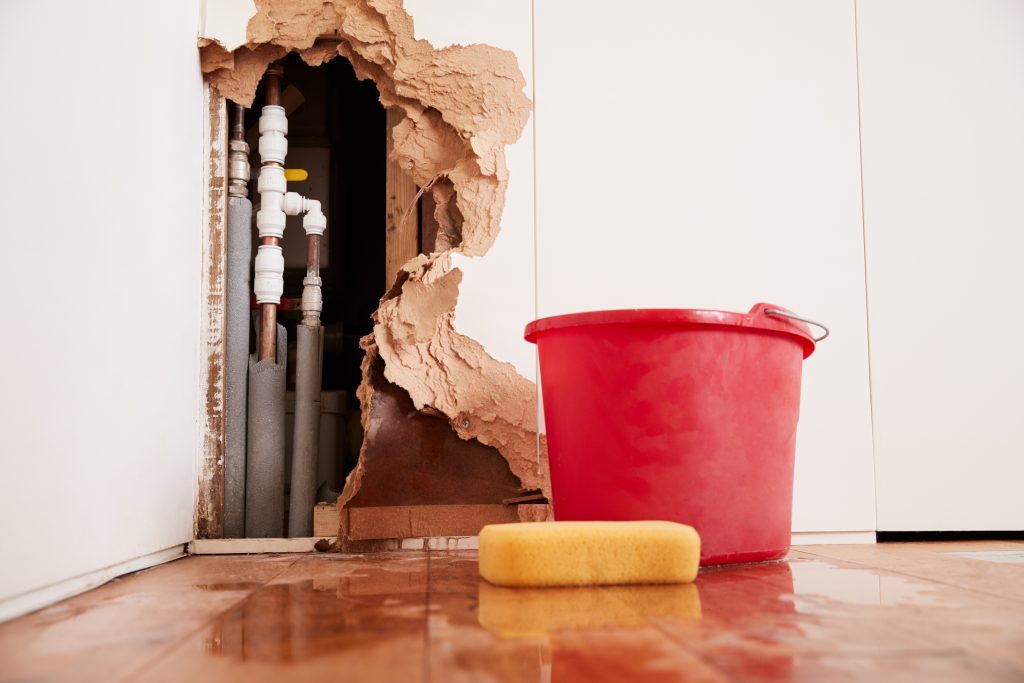Right here below you will discover lots of professional facts in relation to Hacks to detect leaks.

Early detection of dripping water lines can reduce a potential catastrophe. Some small water leakages might not be visible.
1. Check Out the Water Meter
Every residence has a water meter. Examining it is a guaranteed manner in which assists you find leakages. For beginners, turn off all the water sources. Make sure no one will certainly purge, utilize the tap, shower, run the cleaning machine or dishwasher. From there, go to the meter as well as watch if it will alter. Given that no person is utilizing it, there should be no motions. That shows a fast-moving leakage if it relocates. If you spot no modifications, wait an hour or 2 and also examine back once again. This suggests you might have a slow leak that can even be underground.
2. Check Water Consumption
Examine your water expenses and also track your water intake. As the one paying it, you must see if there are any kind of disparities. If you spot sudden changes, despite your intake coinciding, it means that you have leaks in your plumbing system. Keep in mind, your water costs need to drop under the very same array on a monthly basis. An abrupt spike in your costs indicates a fast-moving leakage.
On the other hand, a steady increase each month, despite having the same habits, shows you have a slow leak that's also gradually intensifying. Call a plumber to completely examine your building, particularly if you really feel a cozy area on your floor with piping beneath.
3. Do a Food Coloring Examination
When it involves water usage, 30% comes from bathrooms. Examination to see if they are running appropriately. Decline specks of food color in the storage tank and also wait 10 mins. There's a leakage in between the tank and bowl if the color somehow infiltrates your bowl during that time without flushing.
4. Asses Outside Lines
Do not neglect to inspect your outside water lines too. Test faucets by connecting a garden hose. Needs to water leak out of the connection, you have a loosened rubber gasket. Replace this and make sure all connections are limited. It will assist obtain it expertly checked out and kept annually if you've obtained a sprinkler system. One small leakage can waste tons of water and also increase your water bill.
5. Examine as well as Examine the Situation
House owners need to make it a behavior to inspect under the sink counters as well as also inside cupboards for any type of bad odor or mold and mildew growth. These two red flags show a leak so timely interest is required. Doing regular inspections, also bi-annually, can save you from a major trouble.
A lot more importantly, if you recognize your house is currently old, maintain a watchful eye on your heaters, tubes, pipes and so on. Look for discolorations as well as damaging as many pipelines and also devices have a life expectancy. They will likewise normally deteriorate because of damage. Do not wait for it to intensify if you believe dripping water lines in your plumbing system. Call a specialist plumber right now so you do not end up with a terrible mess in your house.
Early discovery of leaking water lines can reduce a possible catastrophe. Some tiny water leakages might not be visible. Checking it is a guaranteed way that aids you uncover leaks. One small leak can throw away lots of water and surge your water costs.
If you suspect leaking water lines in your plumbing system, do not wait for it to intensify.
WARNING SIGNS OF WATER LEAKAGE BEHIND THE WALL
PERSISTENT MUSTY ODORS
As water slowly drips from a leaky pipe inside the wall, flooring and sheetrock stay damp and develop an odor similar to wet cardboard. It generates a musty smell that can help you find hidden leaks.
MOLD IN UNUSUAL AREAS
Mold usually grows in wet areas like kitchens, baths and laundry rooms. If you spot the stuff on walls or baseboards in other rooms of the house, it’s a good indicator of undetected water leaks.
STAINS THAT GROW
When mold thrives around a leaky pipe, it sometimes takes hold on the inside surface of the affected wall. A growing stain on otherwise clean sheetrock is often your sign of a hidden plumbing problem.
PEELING OR BUBBLING WALLPAPER / PAINT
This clue is easy to miss in rooms that don’t get much use. When you see wallpaper separating along seams or paint bubbling or flaking off the wall, blame sheetrock that stays wet because of an undetected leak.
BUCKLED CEILINGS AND STAINED FLOORS
If ceilings or floors in bathrooms, kitchens or laundry areas develop structural problems, don’t rule out constant damp inside the walls. Wet sheetrock can affect adjacent framing, flooring and ceilings.
https://www.servicemasterbyzaba.com/blog/how-to-detect-water-leakage-in-walls/

As a passionate person who reads about Locating water leaks, I thought sharing that excerpt was a great idea. Enjoyed our article? Please share it. Help others discover it. Thanks for your time spent reading it.